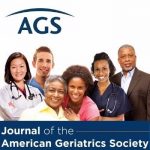 Journal of the American Geriatrics Society Research Summary
Journal of the American Geriatrics Society Research Summary
Obstructive sleep apnea (OSA) is a common condition that causes brief, repeated pauses in breathing throughout the night as you sleep. OSA is linked to several serious health problems, including heart disease, difficulties with thinking and memory, depression, car crashes, heart disease, stroke, and diabetes. Having OSA can also cause a decline in quality of life, and increase the risk of motor vehicle crashes.
Until now, researchers have not explored on a national scale how many older adults may be at risk for OSA, or how often healthcare providers evaluate and treat the condition in older people. Recently, a team of researchers from the University of Michigan designed a first-of-its-kind study to answer those questions. Their work was published in the Journal of the American Geriatrics Society.
The researchers studied information from the National Health and Aging Trends Study (NHATS), a survey of Medicare beneficiaries that assesses the impact of aging on health and well-being. Funded by the National Institute on Aging, NHATS has conducted five annual face-to-face interviews in older adults’ homes since 2011. The NHATS research team has collected detailed information about participants’ health, physical and mental capabilities, living conditions, daily activities, and social support. In 2013, NHATS interviews also asked beneficiaries questions about sleep disturbances and symptoms of sleep apnea. Many of the NHATS sleep questions resembled questions from a common sleep apnea screening questionnaire known as the “STOP-Bang” questionnaire, which got its name from the symptoms it assesses: snoring, tiredness, observed apneas (pauses in breathing), high blood pressure, body mass index (BMI, a ratio of weight to height that assesses levels of under/overweight and obesity), age, neck circumference, and gender. Continue reading
